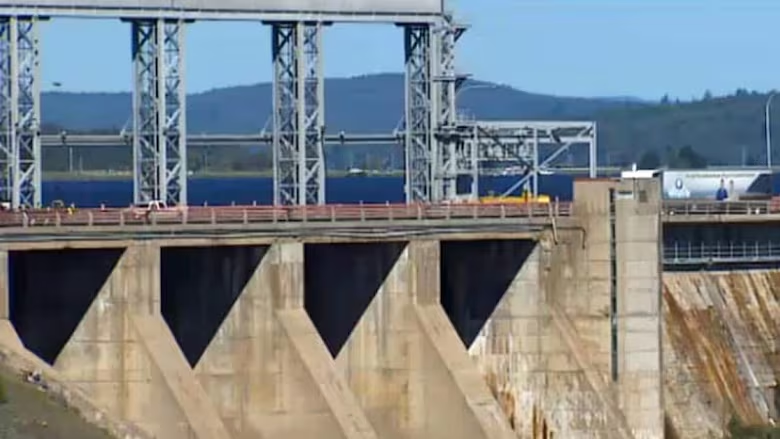Mactaquac dam replacement testing going ahead this summer
NB Power considering options for replacing generation station by 2030 at cost of up to $5B

People living close to the Mactaquac dam are being advised they may "experience minimal noise and traffic disruption" this summer as research continues on the future of the generating station.
Preliminary testing for a potential development site for a new generating station is scheduled in June and July.
The work is needed to determine if the potential site, which is on the opposite side of the riverbank from the current generating station's location, is suitable for future development.
NB Power says part of that work will involve clearing a three-metre path and drilling about 12 small holes, measuring about 10 centimetres in diameter, in the ground to test the depth of the rock below.
The dam supplies about 12 per cent of New Brunswick's electricity needs, but is nearing the end of its life and NB Power is exploring options for replacing it.
The options under consideration are:
- Repowering the dam by replacing the spillway and the powerhouse.
- Maintaining the headpond behind the dam by replacing the spillway, but not the powerhouse and no longer generate electricity through the dam.
- Remove the spillway, powerhouse and earthen dam.
In documents filed last fall with the New Brunswick Energy and Utilities Board, NB Power said the cost of replacing the Mactaquac station by 2030 could run as high as $5 billion. It would be the most expensive project ever undertaken by NB Power.
NB Power expects to recommend its preferred option to the provincial government in 2016.
The 660-megawatt plant officially opened in 1969 and was supposed to produce electricity until 2068. However, its lifespan has been shortened by almost 40 years because of a condition known as alkali aggregate reaction that causes the dam's concrete structures to expand.